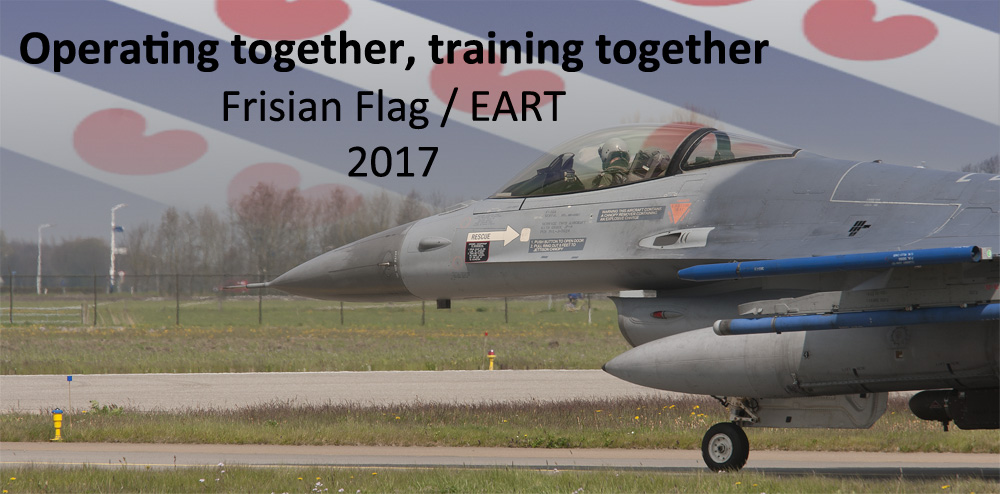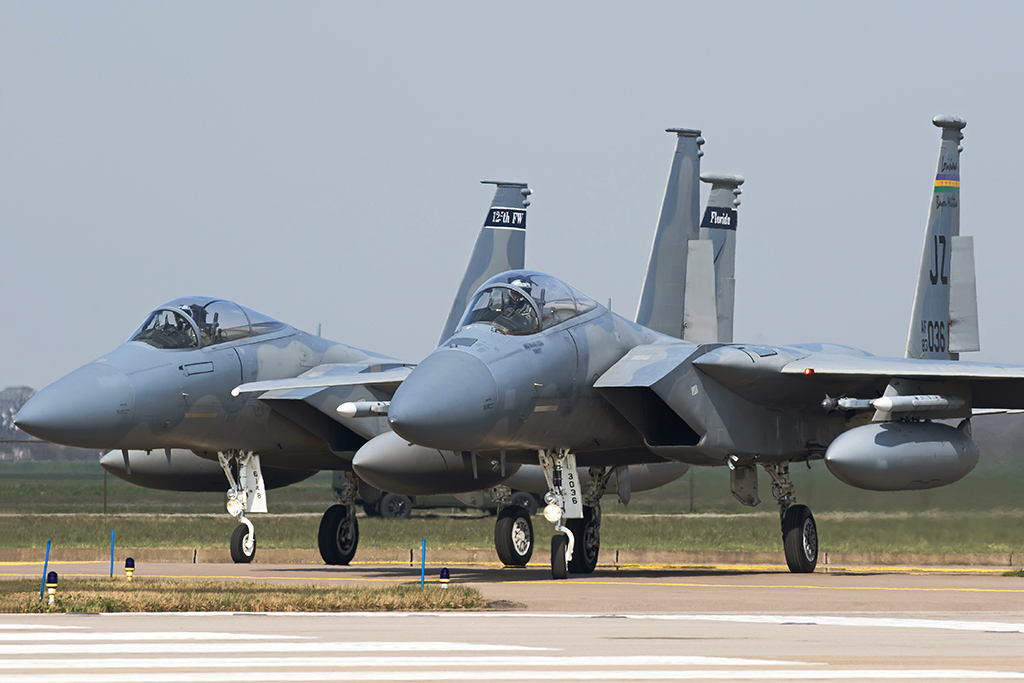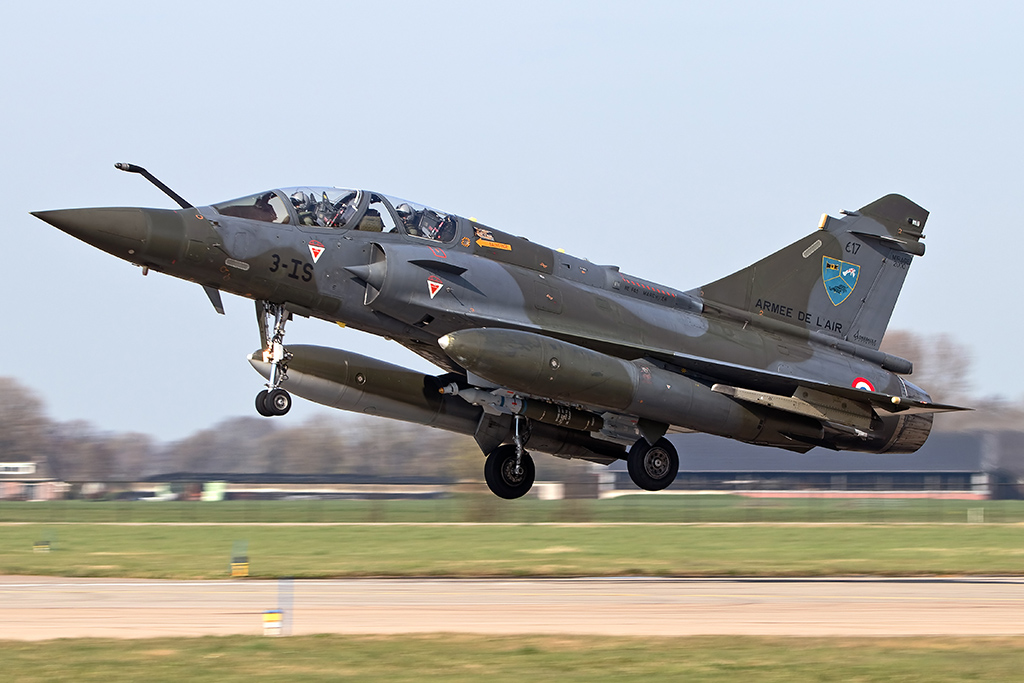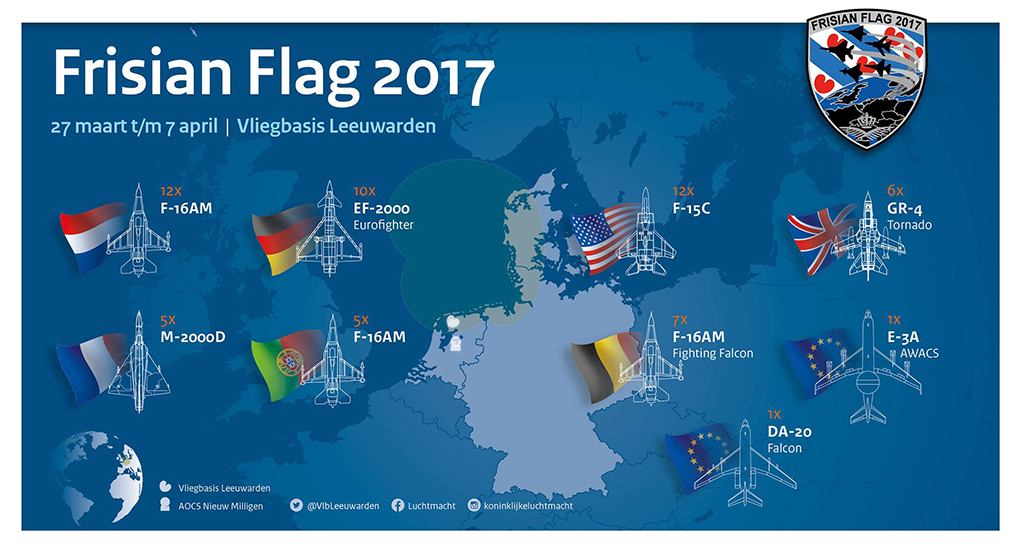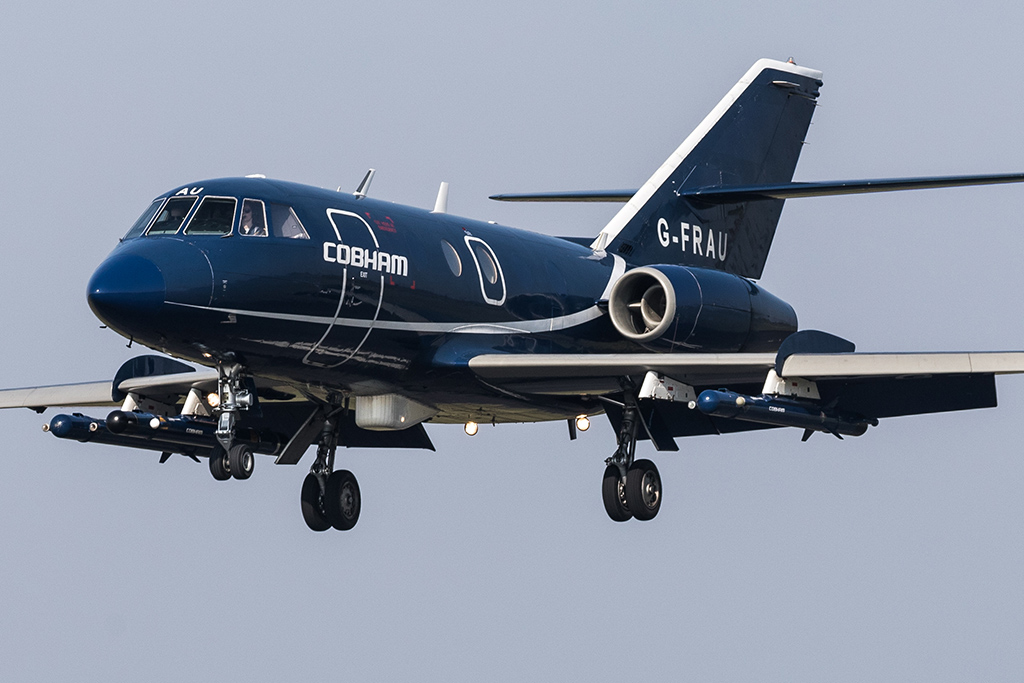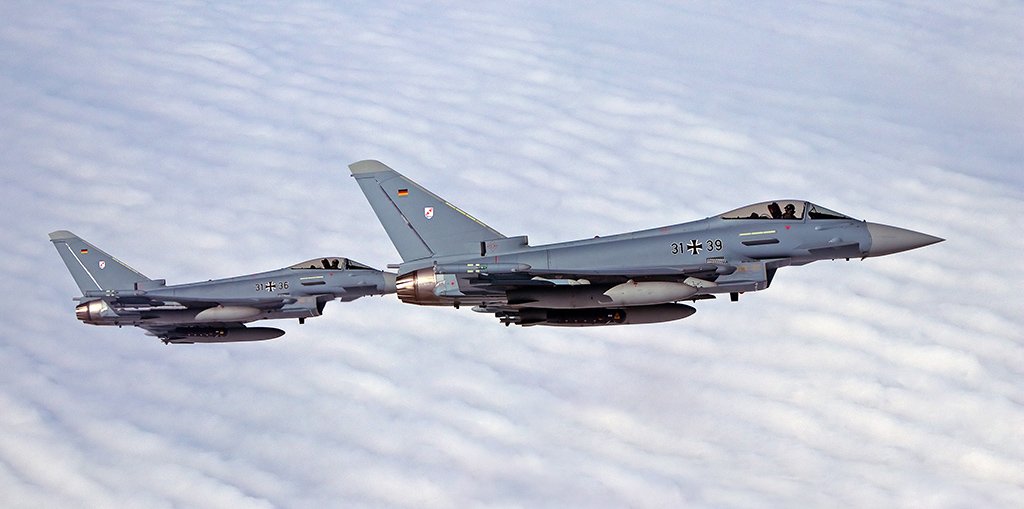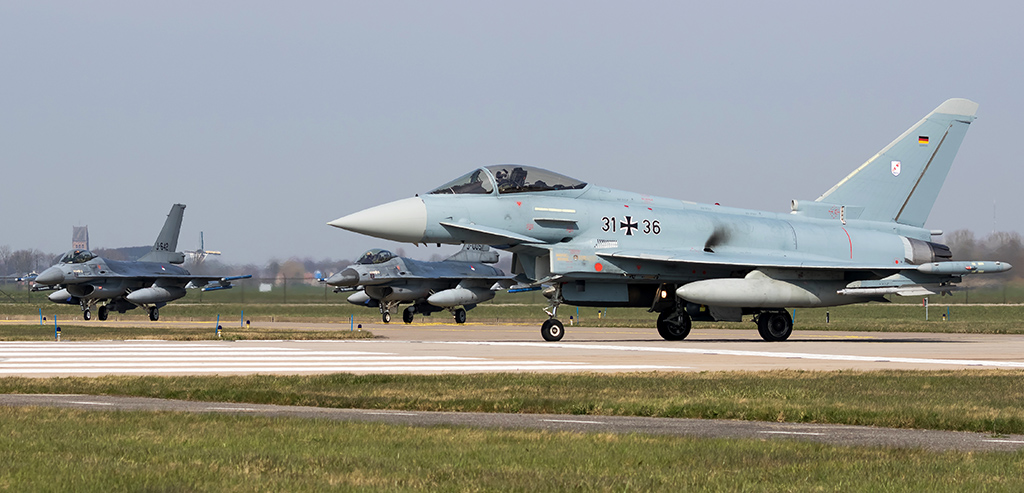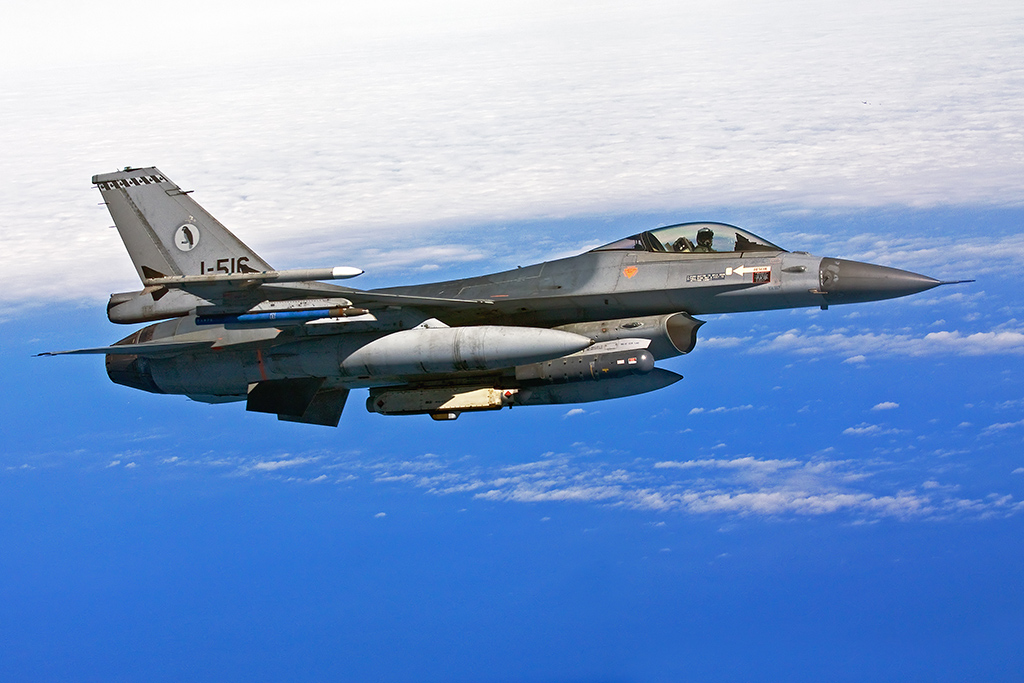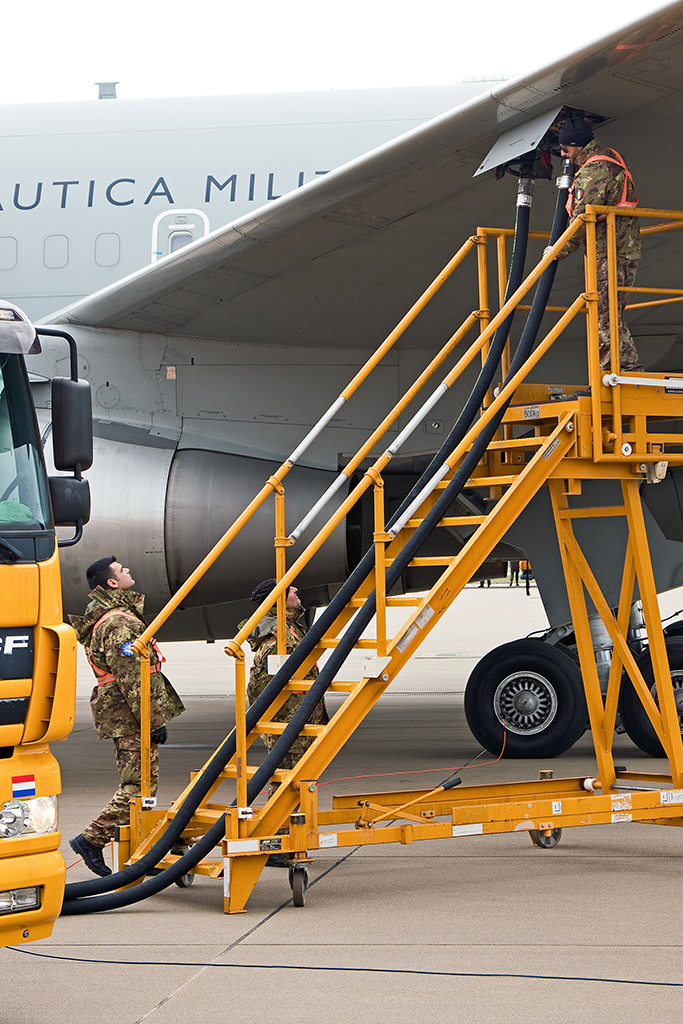The commander of the Royal Netherlands Air Force Base Leeuwarden, colonel-pilot Denny 'Trash' Traas, said: "Last year I thought the since 1992 annually held exercise Frisian Flag could be suspended in 2017 due to the Royal Netherlands Air Force's (RNLAF) transitioning from the F-16 to the F-35 Lightning II. But today we all know the F-35 will not be entering our operational service before 2019, so fortunately the preparations for the next year's edition can start soon." The 2017 edition took place from 27th of March until 7th of April. Just like last year, the European Air Refueling Training (EART) was integrated during this period. Combining both exercises makes it possible to train fighter pilots, tanker crews and ground crews in air to air refueling (AAR) as well as planning of (tanker)flights during a simulated but realistic war situation in which around 50 aircraft are active simultaneously during every mission.
Introduction Flag exercises
After the Vietnam War evaluations showed that the United States Air Force (USAF) performed unacceptable in air combat maneuvering. The USAF decided to organize an intensive and realistic training program for its pilots and weapons systems officers. This led to the Red Flag exercises from 1975 and on. Besides four Red Flag's each year also about 10 Green Flags (close air support to the US Army) and one Maple Flag, held by the Royal Canadian Air Force in Canada, are organized.
The European equivalent is Frisian Flag, annually organized by the RNLAF since 1992. The exercise provides the opportunity for the participating air forces and their personnel (airmen as well as ground crews) to practice realistic and complex Composite Air Operations (COMAO) missions within international context and cooperation. The goal in general is to speak the same language within coordinated procedures between NATO-allies. The exercise's overall motto is 'If we operate together, we need to train together', next to the well-known 'Train as you fight'.
FF2017
Delegations from seven countries have marked the period between the 27th of March and 7th of April 2017 for months ahead in their calendar. Besides the RNLAF also the air forces of Belgium, Germany, France, Portugal, the United Kingdom and the United States of America participated in this year's edition. Most of the aircraft arrived on Thursday and Friday prior to the exercise. A civilian Dassault 20ECM (Electronic Counter Measures) from Cobham Aviation Services participated, providing electronic warfare training. Finally, NATO participated with an E-3A AWACS flying from Geilenkirchen Air Base (AB). During specific missions also other aircraft and helicopters participated. The Polish Air Force first confirmed its participation with F-16's, but cancelled in February this year.
Colonel Traas explains the basics: "Frisian Flag offers two basic scenarios. Over the North Sea an imaginary line is drawn which is either crossed to attack or is defended. Taken this in mind, every mission commander can invent its own variation. Just like every previous edition, also this year large scale realistic COMAO missions were planned, executed and evaluated. In origin Frisian Flag knows Defensive Counter Air operations (DCA, or Blue Air) and Offensive Counter Air operations (OCA, or Red Air). Exercising this, we try to achieve two strategic objectives."
Captain-pilot Remco is this year's supervising project manager for the second time and explains in more detail: "The first group of strategic objectives of Frisian Flag contains gaining air supremacy in missions, operating in coalitions and short notice deployments. In the meantime we have to be aware of the public and political attention military action has. The other strategic objectives are completing large force employment missions, gaining experience by variating between the different roles (offensive and defensive), working closely together with sea and land based forces and developing friendships amongst participating crews." The supervisor continues: "We train in realistic circumstances to achieve those objectives and incorporate unplanned events or drastic weather changes into our missions to train our ability to adapt and response quickly. Leadership, initiative and self-discipline are very important and therefore promoted." Together participants develop and validate tactics. They also incorporate the lessons learned from similar exercises such as Red Flag in which the RNLAF participated earlier this year and crisis situations such as in the Middle East. The exercise's missions are flown in a designated area with a size of almost 68,000 square kilometers above the North Sea, between the Netherlands and Denmark.
Ground assets
According to the participating forces, Frisian Flag is one of the best and most realistic exercises of its kind. One of the reasons for this is that besides the air forces also ground forces participated. Striking examples are the National Datalink Management Cell (controls and facilitates the use of the communications network Link 16) and Air Operations Control Station (cooperates with all military and civilian users of the exercise's airspace to control and manage air traffic). Army artillery was also provided, by the Dutch and the German forces. Air defense rocket systems such as the PATRIOT, SA-6 and SA-8 and the Smokey SAM (decoy rockets) were incorporated in the missions, simulating threats to support either the offenders or defenders.
Daily timeline
Most Flag exercises follow a mission timeline of 24 hours, resulting in pilots can fly one mission every two days. Frisian Flag however has a 12-hour cycle, which lasts from seven o'clock in the morning until seven o'clock in the evening. Remco: "This is a deliberate choice. The participating air crews therefore can fly a mission each day, in the morning or in the afternoon. The day starts with a mass briefing at 07.00 hours. The first take-offs are around 09.00 o'clock, which are followed by approximately two hours of range time (actual time within the mission area). After the crews landed, there's a mass briefing again during which we evaluate the mission. The cycle ends with planning the next day's mission. We follow the same cycle for the crews participating in the afternoon's mission. That cycle starts at 10.00 o'clock in the morning. Air and ground crews can participate more in the exercise this way than they can in American and Canadian Flag exercises". Particularly the USAF pilots are enthusiastic about this approach, because each pilot gets the chance to practice every day.
EART 2017
In 2004, the European Union (EU) founded the European Defense Agency (EDA). The EDAs task, amongst others, is to improve the capabilities of the European defense. The European Council of the EU has given the EDA also the specific task to improve the employability and efficiency of tanker aircraft in Europe. "The absolute necessity for this became clear during the 2011 operation Unified Protector, the enforcement of a Libyan no-fly zone", colonel-pilot Andrea Massucci explains. "The participating European air forces were very dependent on the tanker capacity of the United States Air Force (USAF). The reason for this was that the European air forces simply didn't operate enough tanker aircraft themselves. On top of that, the tankers they did operate were from various types and therefore unsuitable to refuel all fighter aircraft."
The colonel is the EART 2017 exercise director. He continues: "Besides investigating the possibilities for a European tanker fleet, the EDA organizes EART in cooperation with the European Air Transport Command (EATC) and the Movement Coordination Center Europe (MCCE). EART offers a unique opportunity to train crews, planners, taskers and engineers in planning and executing missions within a multinational framework. Such as during Frisian Flag in which we integrated EART."
Major Maurice Hendriks, Shift Leader of EATC Mission Control, explains about his team's involvement in EART in more detail: "EATC member states have transferred Operational Control (OpCon) to the EATC by a so-called Transfer of Authority. EATC doesn't own the aircraft but determines how every member's transport request is best met by deploying its assets as efficiently as possible. When the decisions are made, the flights are planned by the Tasking Branche and a day prior to the actual flight, the missions are transferred to Mission Control. Aircraft commanders have to brief Mission Control about the course of the flight and any problems that occurred during a flight. Mission Control then will try to solve them and we have to be very flexible and creative doing so." Mission Control however doesn't manage all missions that take place within EATC context. Exercises such as EART aren't covered by the Mission Control's daily management. The major: "That's accurate. OpCon still is Mission Control's responsibility, but during EART we transfer Tactical Control to the aircraft commanders. Together with the exercise director they can plan their exercise missions at own discretion, but they still have to file a daily Situation Report about the missions flown."
Planning
Like in 2015 and 2016, the MCCE Air Cell supported EART17 with providing an AAR Supervisor to Frisian Flag. The supervisor maximizes the use of the tankers within the Frisian Flag scenarios performed. Captain Edward Blaauw, this year's Supervisor, explains: "The Frisian Flag's mission commanders decide for themselves whether they need tanker capacity during their missions. During the exercises I collect all receiver AAR requests and I plan and coordinate the refueling capacity needed and the appropriate tankers to meet the requests. After the participants receive their Air Task Orders they are all briefed. During a four-hour planning cycle all mission are elaborated in detail".
Together with amount of AAR requests in EATC context the need for educated AAR planners is growing. This means enough people with AAR planning skills have to be available. The captain adds: "Due to the expected growth or AAR capacity we decided to train AAR planners within the realistic scenario's both Frisian Flag and EART offer. As an experienced AAR planner I had the additional task to train and educate five new AAR planners".
Training objectives
Major Martin, a RNLAF KDC10 pilot, explains about the EARTs training objectives for this edition: "The most important one obviously is to train air crews in AAR. Secondly, both air crews and logistics are trained in quick turnaround procedures and execution of refueling missions within a multinational framework. During the exercise the complexity will be increased from single ship missions to being part of the COMAO missions within Frisian Flag. EART is perusing a triple approach concept, meaning academics, (de)briefing and execution are all part of the exercise." AAR is a very important for gaining and maintaining air superiority. AAR obviously prolongs aircraft's flying time, increases flexibility and makes it possible for transport aircraft to carry a bigger payload. AAR therefore is a true force multiplier.
The tankers participating in EART refueled their receivers within two tanker tracks, called Shell and Esso. The Shell track is located just to the North West of the Netherlands and was used to refuel Blue Air fighters. The Esso track is located to the West of Denmark and was reserved for Red Air fighters.
Martin continues: "Another example of how Frisian Flag and EART are highly integrated are missions during which an objective is to attack and defend so called High Value Airborne Assets (HVAA), such as tankers or transport aircraft. For obvious reasons, forces want to prevent that its HVAAs are shot down. HVAAs are very vulnerable and therefore it's very important that we all are aware of that fact and that we need to train accordingly. Together with our allies, for the same reasons as Frisian Flag is organized."
EART 2017 was hosted by colonel Eleanor Boekholt-O'Sullivan, commander of Eindhoven AB. The exercise had the same participating air forces and tankers as the last two years: one German Air Force A310-304MRTT, one Italian KC-767A, one French C-135FR and one RNLAF KDC10. Just like the EART participants the USAF send a delegation of mentors. During each AAR mission two mentors were present in another nation's tanker to learn from each other's procedures and to share knowledge. The USAF mentors also looked into the EARTs training value, which could possibly lead to their participation in the future.
Simulated bailout scenario
During EART17 several specific scenarios were trained, such as rendezvous between the participating tankers and a Combat Search and Rescue (CSAR) mission. The latter was executed during the first week of the exercise. The objective was to rescue a downed pilot at sea. The AOCS coordinated the whole mission and as soon as it received the emergency call, AOCS informed the Joint Rescue Coordination Center (JRCC), which is stationed in the northwest of the Netherlands in Den Helder. A RNLAF NH90 helicopter and a Dornier 228 of the Dutch Coastguard were launched. A RNLAF KDC10 tanker acted as Airborne Mission Commander and On Scene Commander to oversee the mission from the air. The good cooperation between the civilian Coastguard and the RNLAF successfully led to the extraction of the downed pilot.
In conclusion
Frisian Flag and EART were each held as separate exercises, integrated in each other. Given the fact that Frisian Flag's motto, which also is very applicable for EART, one would think that both could be held as one big exercise overseen by one supervising exercise director. Just like the overall comparable German exercise JAWTEX. But, because the RNLAF and the EATC execute Frisian Flag and EART separately but integrated, make both exercises as efficient and flexible as they are. Both are very much appreciated NATO-wide for their high training values and variety of training missions. As well as for pilots, as for supporting assets. The 2018 editions will most likely not be changed as far as this aspect of the exercises go. Being asked, the colonels Traas and Massuci both answered that they expect the newest 5th generation fighters and the newest tankers will participate in near future editions: "Maybe already in next year's editions the F-35 and the Airbus A330 will join. Both types are used in the theatre today already, so the need to train together with those assets too is obvious."
This article was also published in Lotnictwo Aviation International 6-2017.
Global Air Power Media would like to thank the EDA, EATC, Leeuwarden PAO and Eindhoven PAO and all others involved in this article for their help and support in creating this article.
